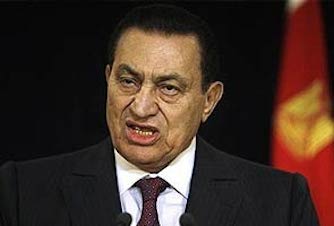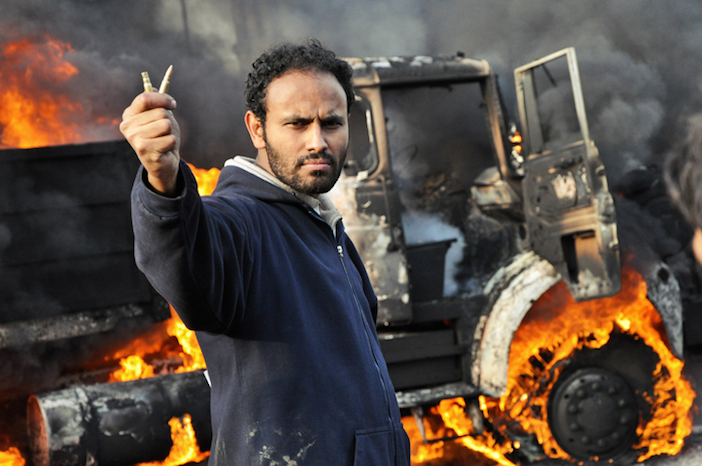Bread, Dignity and Freedom: the Tahrir Square rising, five years on
January 25 marks the fifth anniversary of the mass uprisings in Egypt, most famously in Tahrir Square in central Cairo, which led to a regime change.
The event, following on the heels of the “Jasmine Revolution” in Tunisia, signalled the start of rolling protests across the region which became labelled the “Arab Spring”.
This apparent season was vaunted as a turning point in modern history, when citizens of mostly Muslim countries threw off repressive regimes and embraced pluralist, democratic political processes. In this, it was perhaps uncomfortably reminiscent of the United States’ ongoing campaign to “bring democracy” to failing nations across the globe. Can democracy be either brought, or bought, so easily? Let’s remember what happened in Egypt in 2011, and ask if it appears to have brought improvement, and lasting change.
In Ireland there is a particular interest in the political temperature in Egypt because of Ibrahim Halawa, a young Dublin man with Egyptian roots, who was arrested at a demonstration in August 2013. His trial was adjourned earlier this month – the twelfth time the trial has been adjourned.
Mr. Halawa (20) is standing trial alongside 419 other defendants who were protesting the removal from power of President Mohamed Morsi, the immediate successor to Hosni Mubarak after the upheavals of five years ago.
Simply put, the uprising in 2011 was to oust President Mubarak, who had ruled Egypt for 30 years. He was the beneficiary of the assassination of Anwar Sadat, the ground-breaking peace maker, by members of the Muslim Brotherhood in 1981. Mubarak may have been an accidental president, but he managed to hang on to power – as he mananged to maintain the sleek black appearance of his hair.

But he became increasingly beleaguered, and when the daily matter of enough bread to eat became an issue for the masses after 2007, the time was growing ripe. A more modern provocation – the death of a blogger called Khaled Said in June 2010 at the hands of the ever-unpopular police – had been fermenting for months. It was one of the triggers of all the anger that had been building up for years over corruption, a stagnant economy, neglect of public services and repression. Half the population – which is 83 million – was trying to live on the equivalent of two dollars a day – or less.
In January 2011, thousands and thousands of people took to the streets in the Egyptian capital, shouting their slogan, “Aish, karama, hurriya (Bread, dignity, freedom)”. When the police reacted with force – before largely withdrawing to allow mayhem – the protesters shouted “Peace”, according to Ann Lesch. Similar demonstrations occurred in other places, including Alexandria and Suez City, at the north end of the Gulf of Suez.
Protesters led by middle class
Commentators have noted that the rebellion in Egypt was co-ordinated by middle class, urban dwellers, although the causes were nation-wide.These people could not take over government, so the army was glad to step in.
Mubarak resigned in February, was due to stand trial later that year – a trial which was delayed many times by the 80-year-old’s newly-minted bad health.
Tahrir Square continued to be the site of protests for much of 2011, as the people saw little tangible change despite Mubarak relinquishing power. Elections were held in 2012, elevating Mohamed Morsi, the Muslim Brotherhood candidate, to the presdiency. He was a controversial winner from the outset. In June 2013, Morsi appointed hardline Islamist as governors of half Egypt’s 27 administrative regions; a month later, after mass demonstratioins agaist Morsi, the army staged a coup.
In May 2014, former army chief Abdul Fattah al-Sisi won the presidential election. President Sisi is now in charge of a weakening parliament. Although he has introduced many measures which would tally, on the face of it, with Obama’s call for more human rights, many Egyptians remain unsatsified, with poverty and poor living conditions widespread.

Where now for the Tahrir Square revolution?
The Cairo protests showed the power of the internet, through social media and new ways people could contact others. The communication ease does not appear to have engendered a lasting effect. Writing in the journal Foreign Affairs shortly after Tahrir Square, Lisa Anderson noted that similar events had taken place in 1919. Then the spur had been the fallout from the First World War, and in particular the Fourteen Points of President Woodrow Wilson, with their message of self determination.
Another US President, Barack Obama, made a famous speech in Cairo, two years before the Arab Spring, in which he declared that the US would always support those who sought basic human rights including free speech. But Lisa Anderson [ref below] does not think this was a key cause of the protests, which culminated 18 months later.
Mortada Mansour, an outspoken MP and Sisi loyalist, dismissed reverent reference to the 2011 uprising in an interview with The New York Times. “A revolution has to have a leader,” he said. “This was simply the biggest chaos in history.” Mr Mansour is no fan of social media, either, describing Facebook as “a gutter of filth”.
Egyptian writer Alaa Al-Aswany, writing in the Financial Times, believes “The revolution has not yet achieved its political aims but it has succeeded in changing the way millions of young people think, regardless of social class.”
For him, as for many of his countrymen, the revolution of 2011 is unfinished business.
Sources:
Arab Spring in Egypt: Revolution and Beyond, edited by Bahgat Korany and Rabab El-Mahdi, 2012 [notably contribution by Ann Lesch]
Demystifiying the Arab Spring: The New Arab Revolt, Lisa Anderson, Foreign Affairs, May-June 2011
Aish, Karama, Hurriya Insaniyya: Framing and the Egyptian Revolution of 2011, Killian Clarke, Hagop Kevorkian Center for Near Eastern Studies, 2013
Forces of Fortune, Vali Nasr, 2009
